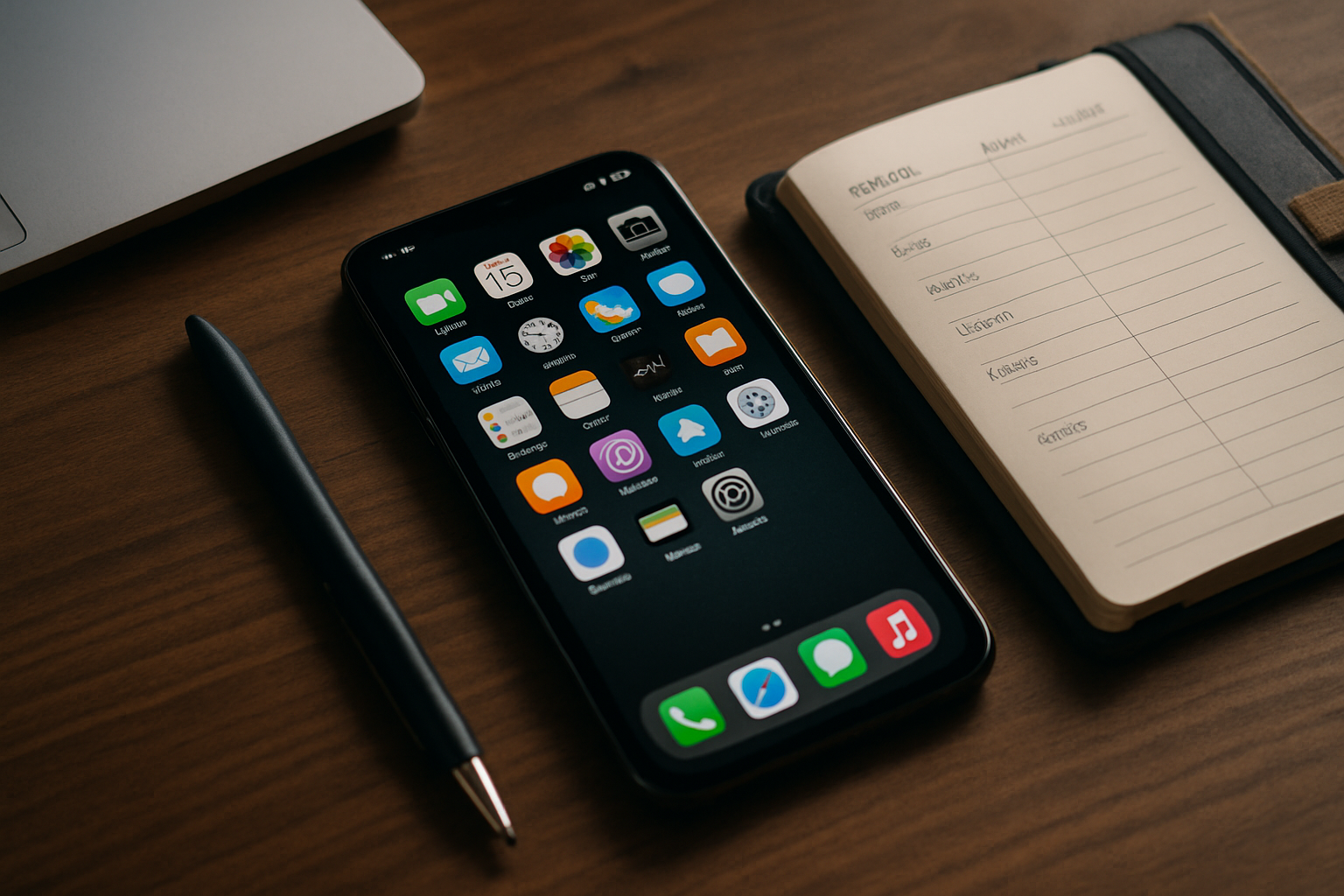
Best tools for ADHD learners
In the ever-evolving landscape of technology and education, digital tools have become essential allies, especially for neurodivergent learners navigating the intricate pathways of IT. Among neurodivergent profiles, learners with ADHD (Attention Deficit Hyperactivity Disorder) often face unique challenges—fluctuating attention spans, difficulties with organization, and the constant battle against digital distractions. Yet, with thoughtfully designed tools, these challenges can transform into opportunities, empowering learners to unlock their full potential.
The Unique Needs of ADHD Learners in IT
The IT field, with its demand for focus, logical sequencing, and often self-directed learning, can be both a source of excitement and frustration for learners with ADHD. On one hand, the dynamic nature of technology can be highly engaging; on the other, the abundance of information and multitasking requirements can easily overwhelm.
ADHD learners benefit from:
- Clear structure and organization
- Immediate and consistent feedback
- Visual cues and reminders
- Flexible pacing and bite-sized information
- Minimal distractions
“The right digital tools can transform chaos into clarity, turning the learning process from a struggle into an adventure.”
Let’s explore some of the most effective tools supporting ADHD learners in IT, focusing on their features, benefits, and real-world applications.
Task and Time Management: Beyond the To-Do List
ADHD learners often struggle with executive functioning—the set of mental skills that include working memory, flexible thinking, and self-control. This makes task management a linchpin in their learning journey.
1. Todoist: Structure Meets Simplicity
Todoist has earned a reputation for its intuitive interface and flexible organization. With color-coded projects, nested tasks, and natural language processing (“Read chapter 2 every Monday at 8am”), it becomes easy to break IT curricula into manageable chunks. The satisfaction of checking off completed tasks provides a dopamine boost—something that can be particularly motivating for individuals with ADHD.
Key features for ADHD learners:
- Visual prioritization (color labels, stars)
- Recurring tasks and reminders
- Integration with calendars and email
- Gamified productivity with “karma points”
2. Trello: Visual Workflow for Clarity
Trello’s Kanban-style boards are a favorite among software developers, but their visual nature is especially helpful for ADHD learners. Cards can represent assignments, deadlines, or concepts, and can be moved across stages (To Do, Doing, Done), offering a tangible sense of progress.
Why it works: The drag-and-drop interface reduces cognitive load, while the ability to attach files, links, and checklists keeps everything in one place. Trello also supports collaboration, making it ideal for group projects—an essential skill in IT.
Reducing Distractions: Creating a Focused Digital Environment
The digital universe is both a treasure trove and a minefield. For ADHD learners, minimizing distractions is not just helpful—it’s essential.
3. Forest: Grow Your Focus
Forest is a unique app that gamifies focus by letting users “plant” a virtual tree that grows as they stay off their phones. If the user leaves the app, the tree withers—a gentle, visual reminder to stay on task. This simple mechanic can be surprisingly powerful for learners who are tempted by constant notifications and social media.
“In a world full of pings and pop-ups, sometimes all you need is a quiet forest to help your mind settle.”
4. Freedom: Blocking Distractions at Their Source
Freedom allows users to block distracting websites and applications across devices. Sessions can be scheduled in advance or started spontaneously, giving ADHD learners the power to control their digital environment. The app’s “locked mode” ensures that even moments of impulsivity won’t derail a carefully planned study session.
Note-Taking and Information Retention
IT learning involves digesting complex concepts, troubleshooting code, and synthesizing information from multiple sources. Effective note-taking tools can bridge the gap between intention and memory, enabling ADHD learners to absorb and recall knowledge more efficiently.
5. Notion: The Digital Brain
Notion combines notes, databases, project management, and calendars into a single workspace. For ADHD learners, its modular approach allows for personalized organization: code snippets can live alongside lecture notes, flashcards, and study schedules, all in a visually appealing interface.
What makes Notion stand out:
- Custom templates for coding, research, and revision
- Embedded media for multimodal learning
- Toggle lists and collapsible sections to reduce clutter
6. Evernote: Tagging for Context
Evernote’s robust tagging and search features make it easy to retrieve information quickly—critical for learners who may struggle with memory and organization. Scannable handwritten notes, audio recordings, and web clippings can all be categorized and cross-referenced, ensuring nothing is lost in the digital ether.
Learning Platforms with ADHD-Friendly Features
While most learning management systems (LMS) aren’t designed specifically for neurodivergent learners, some platforms stand out for their flexibility and accessibility.
7. Khan Academy: Self-Paced Learning
Khan Academy’s extensive library of IT tutorials allows learners to proceed at their own pace, rewinding or skipping as needed. Short video lessons, interactive coding challenges, and instant feedback keep engagement high. The platform’s mastery system encourages learners to revisit topics until concepts are solidified—an approach that supports long-term retention.
8. Coursera & edX: Microlearning and Flexibility
Massive open online courses (MOOCs) like Coursera and edX offer modular courses in programming, cybersecurity, and data science. Many courses are broken into 5-15 minute segments, which are ideal for learners who find it difficult to maintain focus over longer periods. Self-assessment quizzes and discussion forums further support active engagement and spaced repetition.
Assistive Technology: Leveling the Playing Field
For some ADHD learners, traditional keyboard-and-mouse setups or text-heavy platforms can create barriers. Assistive technologies help remove these obstacles, making IT education more accessible and inclusive.
9. Speech-to-Text Tools: Letting Ideas Flow
Voice typing tools like Google Dictation, Dragon NaturallySpeaking, or built-in features in Microsoft Office enable learners to capture thoughts and code snippets rapidly, bypassing the friction of typing. This can be invaluable during brainstorming, debugging, or when documenting code.
10. Text-to-Speech (TTS): Listening to Learn
TTS tools such as Natural Reader or Read Aloud browser extensions convert written content into spoken words. For ADHD learners who may find it challenging to read dense technical documentation, listening can be a more engaging and less tiring way to absorb information. Many IT professionals use TTS to review code comments, documentation, or even forum posts hands-free.
“The ability to switch between reading, listening, and speaking gives neurodivergent learners agency over their learning journey.”
Building Habits and Staying Motivated
ADHD learners often report that the hardest part of learning is not starting, but maintaining momentum. Building consistent habits can be a game-changer.
11. Habitica: Gamifying Progress
Habitica turns habit formation into a role-playing game. Completing tasks, such as daily study goals or weekly coding challenges, earns experience points, unlocks achievements, and helps “level up” a custom avatar. This playful approach taps into the ADHD brain’s love for novelty and rewards, making routine tasks feel less tedious.
12. Streaks: Visualizing Consistency
Streaks visually tracks daily habits, such as practicing coding or reviewing notes. The simple interface and satisfying progress chains reinforce positive behaviors, while gentle reminders help learners get back on track after a missed day.
Community and Peer Support
Technology is not just about algorithms and hardware—it’s about people. For ADHD learners in IT, peer support can be as vital as any digital tool.
Platforms like Discord, Slack, and Stack Overflow offer spaces for learners to ask questions, share resources, and celebrate achievements. Many IT bootcamps now host dedicated neurodiversity channels, fostering a sense of belonging and mutual encouragement.
“No tool can replace the power of a supportive community. Sometimes, just knowing you’re not alone can be the greatest motivator of all.”
Inclusive Design: What the Best Tools Have in Common
Across all these tools, a few common threads emerge:
- Customization: The ability to tailor interfaces, notifications, and workflows to individual needs.
- Visual Clarity: Clean, uncluttered layouts that reduce cognitive overload.
- Multi-Modal Learning: Support for text, audio, video, and interactive elements.
- Positive Reinforcement: Gamification, visual progress markers, and instant feedback.
- Accessibility: Keyboard navigation, screen reader compatibility, and flexible pacing.
These features don’t just benefit ADHD learners—they make IT education more humane and effective for everyone.
Towards a More Neuroinclusive IT Education
The rise of digital tools marks a hopeful chapter in the story of neurodiversity in technology. As educators, developers, and learners, we have the power—and responsibility—to advocate for more inclusive design. By embracing tools that honor diverse ways of thinking and learning, we not only empower ADHD learners but enrich the entire field of IT.
Technology, at its best, is an act of empathy. For every learner who has struggled to keep up, lost track of a deadline, or felt overwhelmed by code, there is now a growing toolkit—and a growing community—ready to help them thrive.
May your learning journey be one of curiosity, resilience, and the joy of discovery, fueled by the tools and communities that celebrate your unique mind.


